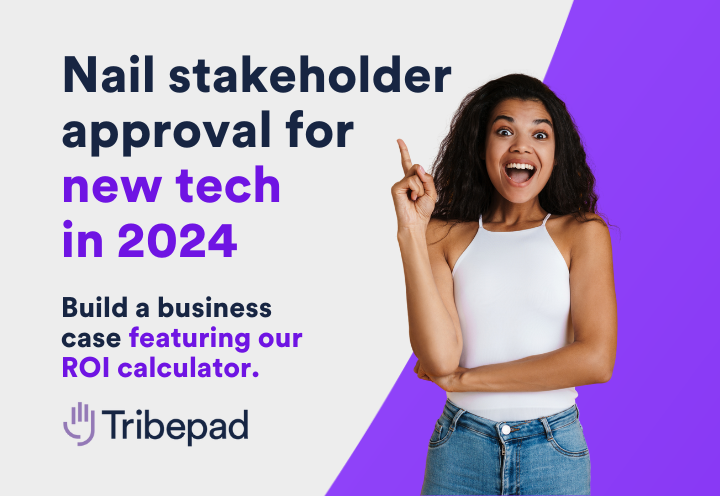At long last. You’ve finally found the right person to join your team. After weeks of interviews. Tens of CVs.
Finally.
The pressure on your team can ease. Projects can get finished. Everyone can breathe a sigh of relief (and stop breathing down your neck).
Except, you can’t relax yet.
Because there’s one thing that makes the difference between a great hire turned bad, and a great hire kept great. Or even better, a great hire turned exceptional.
A great hire who slots effortlessly into your team, energises everyone they work with and helps spur colleagues towards outstanding performance. A great hire who becomes instrumental in setting and maintaining a high-performance team culture.
That one thing is employee onboarding.
You mightn’t even think onboarding is in your remit – but it should be. Keep reading and we’ll prove why employee onboarding matters.

An anecdote about employee onboarding
Meet Sinead. Sinead’s THE senior healthcare administrator you need to turn resident engagement around in your flagship nursing home. You can’t wait for her to start. She can’t wait to start.
She signs the contract, hands in her notice.
And then, nothing. A resounding nothing.
Sinead starts to worry. Did she make the wrong choice? And her current boss says all the right things, even offers her a raise.
Maybe she drops out then, before she even starts. (Like the other 37% of new hires who admit they’ve dropped-out before their first day).
But let’s assume her first day comes.
But you’re busy – that’s why you hired her. So you whiz Sinead around the home, give her IT’s number, make fly-by introductions and that’s that. Employee onboarding done.
(The stats show, that’s probably you. Because 74% of businesses don’t do enough employee onboarding. In fact, 35% spend nothing onboarding – but thousands, if not tens of thousands, on hiring).
But that’s not good enough. Here’s why.
Sinead’s first week flies by, a haze of new names, paperwork and systems set-ups. But then her first month flies by too. And her second. And suddenly you’re assessing her six-month performance and resident engagement hasn’t improved.
And your team are still grumbling because they’re overworked – even more than they were, because they’re spending time helping Sinead too. Which creates bad blood amongst Sinead and her team, so she can’t manage effectively.
And she’s lonely, because she hasn’t formed strong friendships. And she’s haemorrhaging confidence – so she loses the get-up-and-go she needs to thrive. Her colleagues become increasingly resentful and their work suffers too.
And soon you’ve got a resident engagement problem and an employee engagement problem. And then Sinead leaves, and other team members follow, and you’re back to the recruitment drawing board.
Or worse, she doesn’t. And you’ve got the nightmare of an underperforming employee and no budget left to hire. And your boss is breathing fire because the home still isn’t performing but you’re trapped between a rock and a hard place.
Because here’s the thing.
Employee onboarding isn’t orientation.
Employee onboarding isn’t (just) about giving Sinead your employee handbook, showing her where the kitchen is, and introducing her to the team.
Employee onboarding is important because it empowers Sinead to be more productive, faster.
(Organisations with a standardised employee onboarding program experience 62% great new hire productivity. Plus 50% faster time-to-proficiency than companies that don’t invest into employee onboarding)
So your team spend less time training her and more time doing their jobs. Which boosts engagement and retention across the team, who don’t feel they’re stuck carrying the extra weight.
(Companies that invest in employee onboarding enjoy 42% less turnover than everyone else.)
Employee onboarding helps Sinead integrate into your team and culture, faster. It equips her with the tools to add the value you hired her for. It helps her build a network and make friends, fast. Which boosts her engagement and insures against her dropping out early.
(Companies who onboard properly experience 50% greater new hire retention. Which matters, because 20% of new hires leave in their first 45-days. Which costs 90% to 200% of annual salary, SHRM say.)
Which all means… employee onboarding matters because it’s how you turn a fantastic candidate into a fantastic long-term team member. So you can get back to what you’re best at: driving results across a high-performance team.
But there’s a catch.
Because none of this happens without your buy-in and support.
Employee onboarding isn’t just HR’s job
Employee onboarding probably sounds like HR’s responsibility. But lack of manager buy-in and accountability for employee onboarding is one of the biggest onboarding challenges.
The reason is, HR isn’t close to new team members like you are. And employee onboarding isn’t a discrete process. It happens continuously, throughout new hires’ first few months. It happens in the moments between the HR meetings and HR support.
Best-practice onboarding crosses siloes to involve people from across the business. But hiring managers lead the charge.
(After all, of the 41% of new hires who’ve left a business within six months 10% blame not getting on with their boss. That’s you. And you can help solve the problem by being empathetic, compassionate and supportive during onboarding).
Here’s a short checklist:
- Send a welcome email when Sinead signs her contract
- (30% of new hires who drop-out before day one blame poor follow-up)
- Send an office-wide introduction email on Sinead’s first day
- (15% of hires who leave within 6 months blame feeling unwelcome)
- Make sure you’re in-office on Sinead’s first day
- (20% of new hires feel frustrated and ignored on their first day)
- Arrange or conduct in-depth on-the-job training
- (38% of new hires wished they had more training during onboarding)
- Set clear early ‘quick win’ performance goals to help Sinead build confidence
- (32% of new hires wished they had clearer goals)
- Check-in with new hires at least weekly
- (24% of new hires wished they had more frequent manager check-ins)
- Assign a mentor or buddy from the team and, ideally, the wider business
- (Two-thirds of the best onboarding programs assign a mentor)
- Book team lunch for Sinead’s first day
- (A third of the best onboarding programs include social onboarding)
- Build a first day logistical checklist (and chase IT/ops so it actually gets done)
- (23% of new hires had no desk; 28% had no computer)
- Continue onboarding for one to three months
- (Companies that onboard for >1 month see 9% lower year one retention)
Employee onboarding drives higher performance teams
Employee onboarding matters – and it matters for managers. If you care about your Sineads fulfilling their potential and becoming a cornerstone member of your high-performance team, that is.
To build a team that gets noticed across the business for exceptional results, almost always, you need to onboard new team members more effectively. Employee onboarding isn’t just nice-to-have, it’s must-have for cementing a high-performance team culture.
Discover how Tribepad’s onboarding software makes delivering a superstellar onboarding experience simple. So you can trust your people have everything they need to succeed.
Onboarding in 2021, covid, home working and mental health
So… if you’re here, you’re probably wondering how this onboarding stuff applies right now. Hiring’s still happening but most businesses are still working from home – so where does that leave onboarding?
The short answer is, employee onboarding matters now more than ever.
Getting new hires – like Sinead, above – up-and-running is even harder from home. There are all-new challenges in making sure new starters are equipped to thrive.
At the most basic level, do they have the tools to work effectively from home? A desk, even? An ergonomic chair? A proper screen? Laptops and kitchen stools might be fine for the occasional home-working day but with no end in sight for working from home, those things need thought.
Even more important are the social elements of onboarding. Helping new hires integrate into your team and culture – as we write below – is one of the most fundamental elements of onboarding. Now, remotely, that’s especially challenging.
How can you bring your culture to life, remotely? How can you ensure your new hires know their team, not just their names but well-enough to bond? How can you help new hires make friends at work, not just in your team but across the business?
And then there’s the mental health aspects – long-term lockdowns have left us all on shaky ground. Remote onboarding sets the tone, helping your new starters build a support network to help them through tougher-than-normal times. If new hires are struggling, how will you know? How can you help them feel comfortable confiding in colleagues they mightn’t have bonded with as strongly as they would’ve in-person?
These are the biggest questions that effective remote onboarding has to answer. Many of the ideas below are suggestions that seem only to apply to the physical office – like team lunches, buddy schemes and face-to-face check-ins.
But they’re even more important now. Look for ways to recreate them in an online environment – could you have Friday night Zoom drinks, for example? Could you set-up daily short online chats for new hires with someone else from the team?
It’s especially important right now that remote onboarding isn’t left to HR. Managers, team leaders and colleagues have to step up.





